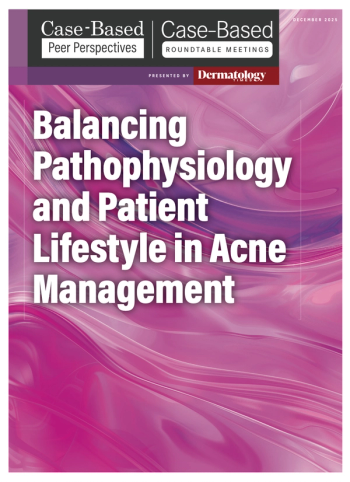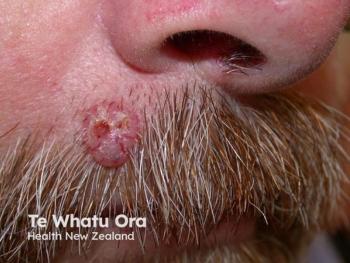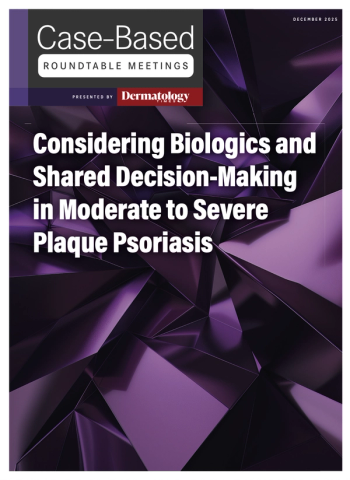
Journal Digest: April 9
Key Takeaways
- Disparities in pediatric atopic dermatitis are influenced by race, socioeconomic status, and region, affecting prevalence and access to care.
- Nurse-led models for skin cancer detection demonstrate high diagnostic accuracy and improved patient access and satisfaction.
This review of the latest dermatologic studies includes insights into disparities in pediatric atopic dermatitis, nurse-led models for skin cancer detection, and more.
Pediatric Dermatology: An Updated Scoping Review of Disparities in Pediatric Atopic Dermatitis
A recent scoping review explored disparities in pediatric atopic dermatitis (AD) in the United States. Researchers systematically analyzed 53 studies published between January 2021 and May 2024, focusing on inequities related to race/ethnicity, socioeconomic status, region, sex/gender, and language. Most studies examined racial and ethnic disparities, followed by socioeconomic, regional/environmental, sex/gender, and language factors. The review highlighted disparities in AD prevalence, health outcomes, and access to care.1
Journal of Advanced Nursing: Nurse-Led Models of Service Delivery for Skin Cancer Detection: A Systematic Review
A recent systematic review evaluated nurse-led models for skin cancer detection, analyzing their roles, clinical effectiveness, and added benefits. Out of 6680 records screened, six studies involving 3325 patients from England, New Zealand, and the US met inclusion criteria. Findings showed that nurse-led care offered high diagnostic accuracy, reduced waiting times, and improved patient access and satisfaction. Although direct comparisons with dermatologist-led care were limited, 1 study found nurses performed comparably to ophthalmologists in diagnosis. The review suggests nurse-led models can effectively support or supplement physician care in skin cancer management.2
Mycoses: Emergence of Trichophyton tonsurans—A Retrospective Multicentre Study of the Dermatophyte Spectrum in Germany
A recent multicenter study assessed the dermatophyte spectrum and infection types in German university hospitals in 2018 and 2023. The study analyzed mycological cultures from 1915 patients, with findings showing a shift in dermatophyte prevalence. Trichophyton rubrum remained the most common dermatophyte, but infections caused by Trichophyton tonsurans significantly increased, particularly in tinea capitis, which doubled from 4.3% to 9.3%. In 2023, Trichophyton tonsurans became the leading pathogen in tinea capitis (67.6%) and the second most common in tinea corporis (26.3%). The median age of affected patients with Trichophyton tonsurans was 18 years, a marked increase from 9 years in 2018, with a higher proportion of male patients.3
Journal of Cosmetic Dermatology: The Kesty Hyperpigmentation Scale: A Study to Validate a New Tool for Assessing Facial Hyperpigmentation
A recent study introduced the Kesty Hyperpigmentation Scale (KHS), a new clinical tool designed to evaluate facial hyperpigmentation consistently in both cosmetic and medical dermatology settings. The scale, developed through a rigorous validation process, demonstrated strong reliability and validity based on various statistical analyses, including Gwet's AC2 and Kendall’s W. The KHS uses a 0–3 rating scale and provides an objective way to measure hyperpigmentation severity, making it easier for clinicians to monitor patient progress after treatment. The tool was well-received by participants, who found it user-friendly and expressed interest in using it to enhance patient communication and document treatment outcomes.4
International Journal of Dermatology: Comprehensive Literature Review Evaluating the Use, Safety, and Efficacy of Subcutaneous Methotrexate in the Treatment of Adult Patients With Moderate-To-Severe Plaque-Type Psoriasis
A literature review examined the differences between oral and subcutaneous methotrexate (MTX) for treating chronic plaque-type psoriasis, focusing on absorption, bioavailability, efficacy, safety, patient satisfaction, adherence, and costs. Thirty-two articles, including clinical trials and guidelines, were reviewed, with European guidelines favoring subcutaneous MTX. The review found that subcutaneous MTX may address some limitations of the oral form, such as absorption and bioavailability, and potentially offers higher efficacy and better adherence. Further research is needed, particularly as biologic treatments become more common.5
References
- Gottlieb S, Madkins K, Lio P. An updated scoping review of disparities in pediatric atopic dermatitis. Pediatr Dermatol. Published online April 1, 2025.
doi:10.1111/pde.15914 - Kattach L, Singleton H, Ersser S, Holley D, Pearson I, Shadeed A. Nurse-led models of service delivery for skin cancer detection: A systematic review. J Adv Nurs. 2025;Published online April 1.
doi:10.1111/jan.16854 - Pilz JF, Schaller M, Köberle M, et al. Emergence of Trichophyton tonsurans—A retrospective multicentre study of the dermatophyte spectrum in Germany. Mycoses. Published online April 8, 2025.
doi:10.1111/myc.70053 - Kesty CE, Kesty KR. The Kesty hyperpigmentation scale: A study to validate a new tool for assessing facial hyperpigmentation. J Cosmet Dermatol. Published online April 1, 2025.
doi:10.1111/jocd.70055 - Viguier M, Carrascosa-Carrillo J-M, Rakvit P, et al. Comprehensive literature review evaluating the use, safety, and efficacy of subcutaneous methotrexate in the treatment of adult patients with moderate-to-severe plaque-type psoriasis. Int J Dermatol. Published online April 1, 2025.
doi:10.1111/ijd.17758
What new studies have you been involved with or authored? Share with us by emailing
Newsletter
Like what you’re reading? Subscribe to Dermatology Times for weekly updates on therapies, innovations, and real-world practice tips.


















